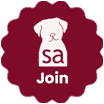Breed standards
Newfoundland
Breed standards are the official guidelines that describe the ideal characteristics, temperament, and appearance of a breed and ensures that the breed is fit for function with soundness essential.

Pre 1987 Kennel Club, London
The dog should impress the eye with strength and great activity. Bone massive throughout, but not to give a heavy, inactive appearance.
A water dog, used for life-saving.
He should have an exceptionally gentle and docile nature.
Head should be broad and massive, the occipital bone well developed; there should be no decided stop; the muzzle should be short, clean cut and rather square in shape and covered with short, fine hair.
Should be small, of a dark brown colour; rather deeply set, but not showing any haw; should be set rather wide apart.
Should be small, set well back, square with the skull, lie close to the head, and covered with short hair without a fringe.
Should be soft and well covered by the lips, should be neither undershot nor overshot but teeth should be level or scissor bite.
Should be strong, well set on to shoulders and back.
Legs should be perfectly straight, well covered with muscle, elbows in but well let down; feathered all down.
Should be well ribbed up with broad back and strong muscular loins. Chest should be deep and fairly broad, well covered with hair, but not to such an extent as to form a frill.
Should be very strong. The legs should have great freedom of action; slightly feathered. Slackness of loins and cow-hocks are a defect. Dew-claws are objectionable and should be removed.
Should be large and well shaped. Splayed or turned out feet are objectionable.
Should be of moderate length, reaching down a little below the hocks. It should be of fair thickness and well covered with hair, but not to form a flag. When the dog is standing still and not excited it should hang downwards with a slight curve at the end; but when the dog is in motion it should be carried up, and when he is excited straight out with only a slight curve at the end. Tails with a kink or curled over the back are very objectionable.
He should move freely on his legs with the body swung loosely between them, so that a slight roll in gait should not be objectionable.
Should be flat and dense, of a coarsish texture and oily nature, and capable of resisting water. If brushed the wrong way it should fall back into its place naturally.
The three recognised colours are:
Dull jet black. A slight tinge of bronze or splash of white on chest and toes is acceptable. Black dogs having only white toes and white chest and white tip of tail should be exhibited in classes provided for black.
Brown. Can be chocolate or bronze. Should in all other respects follow the black except in colour, splash of white on chest and toes is acceptable. Brown dogs to be exhibited in classes provided for blacks.
White with Black markings only - Landseers. For preference black head with narrow blaze, evenly marked saddle and black rump extending on to tail. Beauty in markings to be taken greatly into consideration. Ticking is not desirable.
Any variation from above may be penalised.
Size and weight are very desirable so long as symmetry is maintained.
A fair average height at the shoulders is:
Dogs: 71cms (28 ins)
Bitches: 66cms (26 ins)
and a fair average weight is, respectively:
Dogs: 64-69 kgs (141-152 lbs)
Bitches: 50-54.5 kgs (110-120 lbs).
Any departure from the foregoing points should be considered a fault and the seriousness with which the fault should be regarded should be in exact proportion to its degree and its effect upon the health and welfare of the dog
Weak or hollow back, slackness of the loins.
Cow-hocks. Dewclaws.
Splayed or turned-out feet.
Tails with a kink in them or curled over the back.
Male animals should have two apparently normal testicles fully descended into the scrotum.

